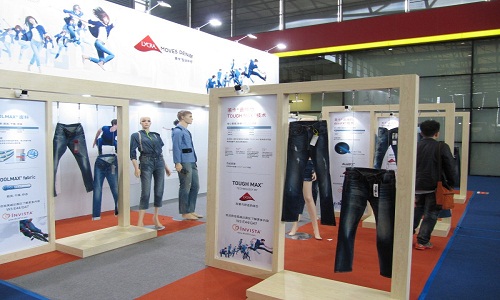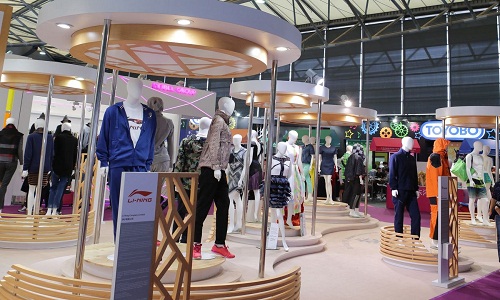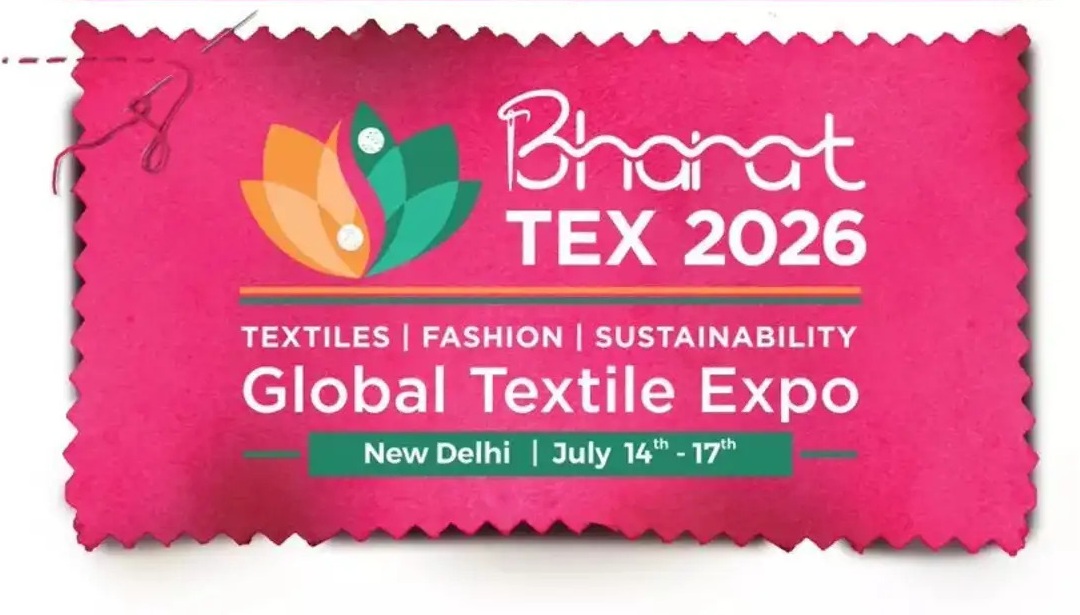FW
Kerala’s Kozhikode district wants to revive its legacy as a textile hub. Vastramandala is a consortium of apparel units formed for this purpose. The objective of the consortium is to promote the products of these apparel units under a brand, Kudumbashree, across the state. The products which mainly include children's apparel and other readymade clothes would undergo strict quality checks so as to compete with the top brands in the field.
Two apparel manufacturing units have been set up. The new units have been named Calico Designs and Calico Fashions. Workers have undergone training in apparel designing at the National Institute of Fashion Technology and would be soon provided further training with modern technologies in the field.
Kudumbashree is an all-women collective of members selected from poor households. There is a huge number of women in Kerala who are members. Their sheer number allows Kudumbashree members to access linkage banking, insurance schemes, grants, interest subsidies and the like. Kudumbashree includes nearly half the households in Kerala. In other words, half the state's population makes a living out of this program.
Kudumbashree today runs about 35,000 microenterprises in fields as diverse as food processing and handicraft and cosmetics.
Indonesian textile and garment makers want greater economic partnership with European and Pacific Rim countries in order to boost the country’s exports. Indonesian companies hope to have a boost in demand from the partnerships’ participating countries.
Garment makers basically welcome any partnership with other countries as long as they help reduce both tariff and non-tariff barriers for Indonesian textile products. Indonesia’s textile exports increased from $11.2 billion in 2010 to an estimated $22.65 billion last year, with import value always below export value.
Indonesia is a member of the Association of Southeast Asian Nations (ASEAN). Indonesia is one country that has been quite active in concluding free trade agreements. Indonesia has FTAs with trading partners that account for 67 percent of its total trade. For context, Chile, Peru, and Mexico have FTA coverage ratios of more than 80 per cent, while Canada, Singapore and New Zealand are at more than 50 per cent.
For small economies there are at least two positive outcomes to be derived from regional trade agreements. The first is an expansion in investment. While the direct impact on trade might be debatable in the beginning, rising investment usually follows. Second, regional agreements can drive unilateral domestic reforms.
Indian garment exporters want the free trade agreement to be signed with the European Union as soon as possible. They feel Indian garment exports have a competitive advantage over Bangladesh in the EU since India has natural as well as man-made fibers coupled with top designers and people in the EU are very fashion conscious and there is a very sophisticated segment for niche garments.
In January 2016, India’s readymade garment export contracted by five per cent. The industry has been raising concerns over Vietnam securing zero-duty access to the European Union market from 2017. Vietnam has already toppled India from position as the world’s third largest garment exporter. Indian products face restrictions such as a 9.6 per cent import duty as an India-EU broad-based trade and investment agreement has yet to be finalised.
Two-way commerce in goods between India and the EU was $98.5 billion dollars in 2014-15. In the US, India is the second biggest garment exporter after China. India is looking at boosting exports in markets where she has an edge over the others to make up for the losses made in other countries. For instance Bangladesh is offering stiff competition to Indian garment exports in African countries.
Vietnam is set to gain a lot from the Trans-Pacific Partnership (TPP). And Bangladesh, China, Indonesia and Pakistan are worried. Bangladesh and China are the world’s number two and the top garment exporter respectively. Indonesia and Pakistan have large textile and apparel sectors.
Vietnam is already the world’s fourth biggest garment exporter. The TPP deal could see Vietnam’s exports — from clothing and footwear to coffee and seafood — increase by 30 per cent and boost the country’s economic growth by 10 per cent by 2030.
Access to TPP for Vietnam is certainly a concern for apparel exporting countries, especially for Bangladesh. Bangladesh will continue to face average duties of 16 per cent on garment exports to the US while Vietnam’s duties will be eliminated. However, TPP still needs to be ratified in the US and several other countries, delaying implementation at least until next year. The EU-Vietnam FTA will take seven years before duties on Vietnam’s garment exports to Europe are completely eliminated.
Even so, key regional apparel producers such as Cambodia and Myanmar are alarmed that if the trade pacts proceed as planned, Vietnam could undercut their vital garment industries. Myanmar garment makers look to Europe as both a market and a source of investment, with garments a key part of the country’s plans to become a manufacturing economy.
Fabric Selection presented its latest collection of knit prints, cotton fabrics, solid wovens, and French terry fabrics. Fabric Selection is an American fabric wholesaler with an elaborate collection of knits, linens, denims, prints, lace, rayon, and others that can be used to make excellent materials in stylish tops, slick swimwear, junior jeans, printed polos, and even sensual lingerie.
The Los Angeles fabric wholesaler has spent countless years providing designers with the best fabrics at exceptional prices. Its success can be attributed not only to its streamlined manufacturing process but to its experienced and dedicated staff who place quality and customer service above all else.
The wholesaler has been providing the Los Angeles fashion district with some of the top quality fabrics that designers and manufacturers utilise to produce cutting-edge designs. Fabric Selection offers a broad array of choices. Each selection is available in a very wide array of colors, styles, and designs. Some of its fabrics are knit fabric, knit prints, solid woven fabrics, woven and rayon prints, poly/rayon blends, solid and printed lace, French terry, jacquard knit, cotton and knit cotton, linen and denim.
www.fabricselection.com/
British textile manufacturer Heathcoat Fabrics has launched a range of flame retardant dress fabrics. Heathcoat Fabrics makes dress nets, tulles and costume fabrics. A typical child’s costume offers no protection to flame and will fully combust in a matter of seconds, while Heathcoat’s equivalent will not burn.
The brand has also developed technology to create fabrics with less than 20 parts per million of formaldehyde. Formaldehyde has been used for decades in washing powders and clothing. It is flammable, emits carbon monoxide when heated, and has been found to be toxic and corrosive. And now it’s possible to create apparel that incorporates such safety precautions.
Heathcoat provides a wide range of own-branded, patented high performance product solutions. It operates a total end-to-end high service with in-house research and development, design, testing and on-site manufacturing facilities that include quality-controlled yarn texturising, warping, weaving and knitting plant and the latest advanced specialist dyeing, textile enhancement treatments and finishing.
Included in the new product offering are the new zero-formaldehyde soft dress net for children's clothes; stiffer flare-free tulles for bridal gown, prom dresses and tutu; dance and fashion dress nets; locknits, textures and technical fabrics, including their own-brand 3D spacetec fabrics in a range of new color and surface combinations.
www.heathcoat.co.uk/
Japan has given a grant to help the cotton industry in Belize. The grant would be used to purchase high clearance tractors and planters. Japan will share its extensive knowledge of processing methods by providing machinery to harvest high quality cotton.
Japan hopes to rejuvenate and expand the production of sea island cotton in Belize. The demand for sea island cotton in Japan is far greater than the world can supply. Because of ideal weather conditions and soil quality, Belize has the potential to become a leading cotton producer in the world. Expanding the industry would be beneficial to the local economy, not just in terms of contributing to the country’s exports, but also because the harvesting of cotton must be done by hand so as not to damage the fibers.
This will create more employment opportunities for local communities. A typical cotton field would need between 150 to 200 cotton pickers and workers can flexibly choose the days they wish to work. Over the past year since the start of the project the harvesters have been primarily women.
Since last year more than 1000 pounds of dried cotton have been received and this year local producers are hoping to produce more than 30,000 pounds of dried cotton worth some 1,60,000 dollars.
"With innovative denim yarn, stretch, embroidered, jacquard and knit fabrics, ‘Beyond Denim’ will be the largest product zones at the Spring Edition 2016 of the upcoming Intertextile Shanghai Apparel Fabrics. The fair is on track to be the most diverse Spring Edition yet, with a number of product zones adding to the flavour of the fair. This edition’s one of the larger product zones is ‘Beyond Denim,’ with over 90 exhibitors presenting their latest products including innovative denim yarn as well as stretch, embroidered, jacquard and knit denim fabrics."

With innovative denim yarn, stretch, embroidered, jacquard and knit fabrics, ‘Beyond Denim’ will be the largest product zones at the Spring Edition 2016 of the upcoming Intertextile Shanghai Apparel Fabrics. The fair is on track to be the most diverse Spring Edition yet, with a number of product zones adding to the flavour of the fair. This edition’s one of the larger product zones is ‘Beyond Denim,’ with over 90 exhibitors presenting their latest products including innovative denim yarn as well as stretch, embroidered, jacquard and knit denim fabrics.
Panel discussion on market challenges

A panel discussion on ‘How denim fabric and garment manufacturers work together to cope with market challenges’ to be moderated by the Denim Innovation Alliance will be held to offer industry players an opportunity to exchange their insights on the future of the denim market.
Besides this, a workshop allowing buyers to paint their own denim tote bags and aprons is also being conducted by the Denim Innovation Alliance. Some of the leading suppliers already confirmed to take part in ‘Beyond Denim’ include Kipas Denim Mills (Turkey), Malwa Industries (India), Orta Anadolu (Turkey), Prosperity Textile (China), W Denim (Turkey) and Yixing Lucky G&L Denim (China) among others.
Nearly 300 activewear exhibitors to feature
This year, nearly 300 international and domestic exhibitors with activewear fabrics and production technology will feature at the fair. With Chinese companies located in hall 8.1 and overseas suppliers featuring in the Functional Lab in hall 7.2. And two group pavilions from Korea are involved here too, namely the Gyeongbuk Natural Color Industry Institute and Dyetec Pavilions.

Sustainability products and services are also an increasingly important aspect of the fair. The ‘All About Sustainability’ zone will once again feature sustainability related NGOs, certifiers, testing companies and manufacturers with eco-friendly products, as well as an ecoBoutique area presenting sustainable outfits from Huafu, Redress and others. Hohenstein Textile Testing, SGS, Testex and TÜV SÜD are just some of the others taking part in this zone.
In addition to these two aspects, the Forum Space area of the zone hosts a number of seminars and panel discussions on sustainability issues. The ‘Green Opportunities with Flax and Linen’ panel discussion will feature speakers from the European Flax & Hemp Confederation (CELC), China Bast and Leaf Fibres Textile Association, Elementi Moda, Tongling Worldbest Ramie & Linen Textiles and Xin Shen Group. And a panel on implementing China’s 13th Five-Year Plan for green manufacturing will be moderated by the China National Textile and Apparel Council.
‘Verve for Design’ from seven countries
Considering the huge popularity with buyers of the ‘Verve for Design’ area during last year’s Autumn Edition, this year’s fair is expected to witness over 20 exhibitors of original fabric pattern designs from Australia, France, Italy, Japan, Russia, Switzerland and the UK taking part. A selection of the leading brands on display includes Acorn Conceptual Textiles, Circleline Design Studio, Design Union and Westcott Design from the UK, Gibson Design Studio from Switzerland, and Cloth Collections and Longina Phillips Designs from Australia.
Intertextile Shanghai Apparel Fabrics-Spring Edition 2016, is co-organised by Messe Frankfurt (HK); the Sub-Council of Textile Industry, CCPIT; and the China Textile Information Centre.
The Indian denim industry is looking to gradually increase its share of exports from its current 35 per cent. For this to happen the industry has to increase its capacity by another 300 million meters. Historically, denim has been one of the fastest growing apparel fabric segments, having grown from 700 million meters in 2010 to 1.2 billion in 2015. Yet, there is a gap of another 300 million meters in India if the denim industry needs to tap its full export potential. Whereas, exports of textiles have not done well in the last few years and denim as one of the major textile product groups could push textile exports. The Denim industry’s domestic and export ratio even though is set to change from 65:35 to 55:45. It is expected to touch 1.5 billion meters capacity by 2020.
In this backdrop, Diagonal Consulting (India) jointly with the Confederation of Indian Textile Industry (CITI) is organizing an International Denim Conference in Ahmedabad February 19a nd 20, 2016.
Exports of textiles have not done well in the last few years and denim as one of the major textile product groups could push textile exports. While India has been one of the major global suppliers of denim fabrics, the country still falls behind other competing nations in terms of denim apparel such as jeans. Also, while most global brands outsource denim apparel work to Indian players, much of it is meant for the domestic market and not for exports.
The Indian denim industry should bag orders not just for the domestic market but also that it becomes a global hub for branded denim apparel. The industry is expected to touch a 1.5 billion meter capacity by 2020.
Raw materials, rent, labor costs have all increased while corporate profit margins shrinked in China since 2015. However, its garment industry is showing good results. According to China National Garment Association statistics from January 2015 to November 2015, above-scale garment enterprises’ (15,586 in numbers) main business income reported 1.984423 trillion Yuan, with a total profit of 112.802 billion Yuan and an increase by 5.94 per cent business operations.
Chen Dapeng, Executive VP, China National Garment Association, under the new normal economy, China's garment industry must rapidly increase their ability to innovate with various adjustments and should change to keep up with the development of consumer and market demand. Experts believe that since entering 2015, although the basic clothing consumption continued weakness, the growth rate has stabilized.












